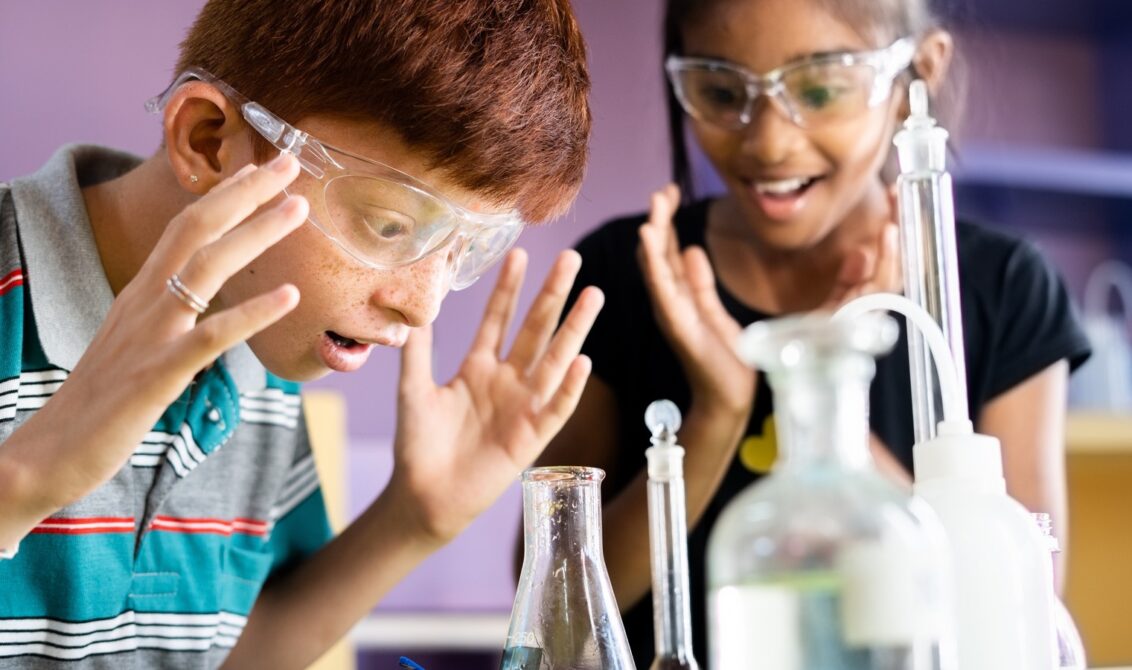
Science provides learners with ways to understand the world in which they will grow up. What takes place in a science lesson is intended to be a smaller-scale version of what takes place in the scientific community worldwide. As an educator, your aim is to equip learners with a structured, repeatable way of thinking as they explore the world around them and try to explain their observations and experiences. This is the basis of scientific enquiry.
I would argue that, in years 1 to 3, teaching these transferable enquiry skills is paramount, over and above the curriculum content. What is my justification for this statement?
Learners with good enquiry skills can adopt a more structured approach to understanding new content and to identifying and communicating what does not make sense to them.
Enquiry skills provide a common structure and thinking process which learners can apply to new situations and new contexts, at school and beyond. It also equips them with skills to undertake their own research and explore independently.
This emphasis on teaching enquiry skills to very young learners does not need to make your lessons any more complicated. Indeed, it may simplify them as you set out to provide a repeatable approach to thinking and exploring using precise, but limited vocabulary.
The role of observation
Observation is your key starting point. Use the word ‘observe’ in a particular scientific way. It is not a casual look, as in ‘look out of the window’ or ‘look where you are going’. Instead, use it to describe a focussed look:
‘Can you observe two ways in which this animal moves?’ or
‘Let’s put this plant in the cupboard and observe any changes next lesson’.
Observing is closely tied to predicting. Once a learner has made an observation of a feature, you could ask what they think that feature is used for. Or if they have observed an action, you could ask what they think might happen next.
As well as readily accepting this type of observe/predict questioning, young children will often be very forthcoming with suggested explanations. If not, you have now set up a structure whereby you can prompt with ‘why do you think that’? Try using this routinely; learners will soon start to follow this sequence for themselves without the prompt:
observe -> predict -> explain
Emphasise that there may not be a ‘right answer’, particularly if observing living things which can be very unpredictable. Allow learners to be comfortable with making an ‘incorrect prediction’. This will start to introduce the idea of repeat observations.
observe -> predict -> observe again -> explain
Building on observation skills
In addition to the sequences above, observation can also lead to making comparisons. This is a higher order skill, so ensure that the idea of observing single objects or phenomena is honed first. Then encourage learners to compare two different organisms or objects, or to observe one and compare how it changes when something is done to it e.g. the plant before and after being placed in the cupboard.
observe -> compare -> communicate/explain
observe -> describe -> compare -> communicate/explain
Comparisons are also good opportunities to introduce equipment. Avoid just presenting a piece of equipment, e.g. a hand lens, a ruler or tape measure and assuming that learners will make the link between using the equipment and why it is making their observation ‘better’. Have simple equipment to hand so that if someone points out a size difference, show the ruler and tape measure and ask what they could use them to do and which would be better in this situation.
observe -> measure -> compare -> communicate/explain
And finally, observations and comparisons can lead to grouping and/or looking for simple patterns. This may be as simple as looking at colours or textures in the format: ‘They all…….except….’ and building from there.
observe -> compare -> group/classify
In conclusion
Provide contexts that give learners the opportunity to develop their enquiry skills. These skills are not intended to be taught in isolation. Lesson plans and text book content in the Pearson International Primary series provide abundant suggestions for such contexts as well as further ideas for developing scientific enquiry in Years 1 to 3.
Subscribe to our blog
If you’d like to stay up to date with our latest articles, why not subscribe to our blog? You’ll get a fortnightly roundup of the articles you’ve missed straight to your inbox, plus links to free teaching resources.

